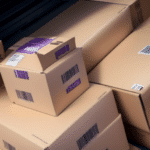Why Proper Package Marking is Essential for FedEx Shipments
Accurate package marking is crucial for the seamless delivery of your shipments through FedEx. Proper labeling ensures that your package is tracked correctly, delivered on time, and handled appropriately during transit. Incorrect or unclear labels can lead to delays, additional fees, or even lost packages, causing frustration for both the sender and the recipient.
Moreover, improper labeling of specific items, such as hazardous materials, can result in legal consequences and safety hazards. Adhering to FedEx’s package marking guidelines not only facilitates efficient delivery but also complies with federal regulations, ensuring the safety of all parties involved.
FedEx's Package Marking Requirements
FedEx has established comprehensive packaging and labeling standards to maintain the integrity and safety of shipments. Here are the key requirements:
- Recipient Information: Clearly display the recipient's name, complete address, and phone number.
- Sender Information: Include the sender’s name, address, and contact details prominently on the package.
- Package Weight and Dimensions: Accurately measure and label the weight and dimensions to ensure correct handling and billing.
- Special Handling Instructions: If your package contains fragile items, perishable goods, or requires refrigeration, these instructions must be clearly marked.
- Hazardous Materials: Compliance with federal regulations is mandatory. This includes proper labeling with the correct shipping name, identification number, and hazard class, as well as providing a Material Safety Data Sheet (MSDS).
For detailed guidelines, refer to FedEx's hazardous materials shipping page.
Measuring and Labeling Irregular Packages
Accurate Measurement Techniques
Measuring an irregularly shaped package accurately is essential to determine the appropriate shipping costs and packaging materials. Use a measuring tape or ruler to measure the longest and widest points of the package. These measurements will help in selecting the right box and calculating dimensional weight, which may affect the shipping price.
Effective Labeling Practices
Clear and legible labels prevent confusion and ensure that your package reaches its destination without issues. Use large, easy-to-read fonts and avoid placing labels over seams or edges where they might be obscured. Additionally, avoid using decorative markings or drawings that can interfere with barcode scanning and tracking.
Implementing standardized labeling practices not only aids in efficient processing but also enhances the professional appearance of your shipments.
Choosing the Right Packaging Materials
Selecting appropriate packaging materials is vital for protecting irregularly shaped items during transit. The materials should provide sufficient cushioning and support to prevent damage.
- Bubble Wrap and Foam Inserts: Ideal for cushioning delicate items and filling voids within the package.
- Packing Peanuts: Useful for bulk protection and preventing movement inside the package.
- Sturdy Boxes or Crates: Ensure the outer packaging can handle the weight and shape of the item without compromising structural integrity.
Additionally, consider using double-walled boxes for heavier or more fragile items to provide extra protection.
Sealing Your Irregular Package Securely
A well-sealed package minimizes the risk of opening during transit, which can lead to damage or loss of contents. Follow these steps to secure your package effectively:
- Use High-Quality Packaging Tape: Invest in durable tape designed for shipping to ensure it holds up under stress.
- Seal All Seams and Edges: Thoroughly tape all openings and reinforcement points to prevent accidental openings.
- Reinforce Weak Points: Apply additional tape to corners and stress points for added durability.
- Fill Empty Spaces: Utilize cushioning materials like bubble wrap or packing peanuts to prevent internal movement.
Proper sealing not only protects the contents but also maintains the package’s professional appearance.
Selecting Shipping Speed and Service
Choosing the right shipping service and speed is essential to meet delivery expectations and manage costs effectively.
FedEx Ground vs. FedEx Express
FedEx offers a variety of shipping options tailored to different needs:
- FedEx Ground: Cost-effective for less urgent deliveries, typically arriving within 1-5 business days domestically.
- FedEx Express: Provides faster delivery options, including overnight and two-day services, suitable for time-sensitive shipments.
Consider factors such as the package’s value, destination, and required delivery timeframe when selecting a service. For comprehensive service details, visit FedEx Shipping Services.
International Shipping Considerations for Irregular Packages
Shipping irregular packages internationally involves navigating diverse regulations and ensuring compliance with the destination country’s import laws.
- Customs Declarations: Accurately complete customs forms, detailing the contents, value, and purpose of the shipment.
- Import Restrictions: Verify that the items being shipped are allowed in the recipient country to avoid confiscation or fines.
- Additional Documentation: Prepare invoices, certificates of origin, and any other required paperwork to facilitate smooth customs processing.
Utilize FedEx’s international shipping resources and tools to stay informed about specific country requirements. More information can be found on FedEx International Shipping.
Best Practices for Handling Irregular Packages
Proper handling during packaging and transportation is essential to maintain the integrity of irregularly shaped items.
- Use Reliable Shipping Providers: Choose reputable carriers like FedEx that have the infrastructure to handle diverse package shapes and sizes.
- Protect Contents: Employ adequate cushioning and secure all items to prevent movement and potential damage.
- Clear Labeling: Ensure that all handling instructions, such as "Fragile" or "This Side Up," are prominently displayed.
Additionally, consider the mode of transportation. For instance, air shipping might be preferable for fragile items to reduce transit time and handling, whereas ground shipping could be more economical for larger or heavier packages.
Avoiding Common Mistakes in Package Marking
Even with the best intentions, certain mistakes can compromise the effectiveness of your package marking strategy. Here are common pitfalls to avoid:
- Incorrect Labeling: Ensure all labels are accurate and complete to prevent misrouting and delays.
- Inadequate Packaging: Use appropriate materials and secure sealing to protect against damage.
- Wrong Shipping Service: Select a shipping method that aligns with your delivery requirements and budget.
- Neglecting Regulations: Stay informed about shipping restrictions and comply with all applicable laws to avoid legal issues.
By adhering to FedEx’s guidelines and implementing these best practices, you can minimize errors and enhance the reliability of your shipments.
For more information on avoiding shipping mistakes, consult FedEx’s Shipping Resources.






















